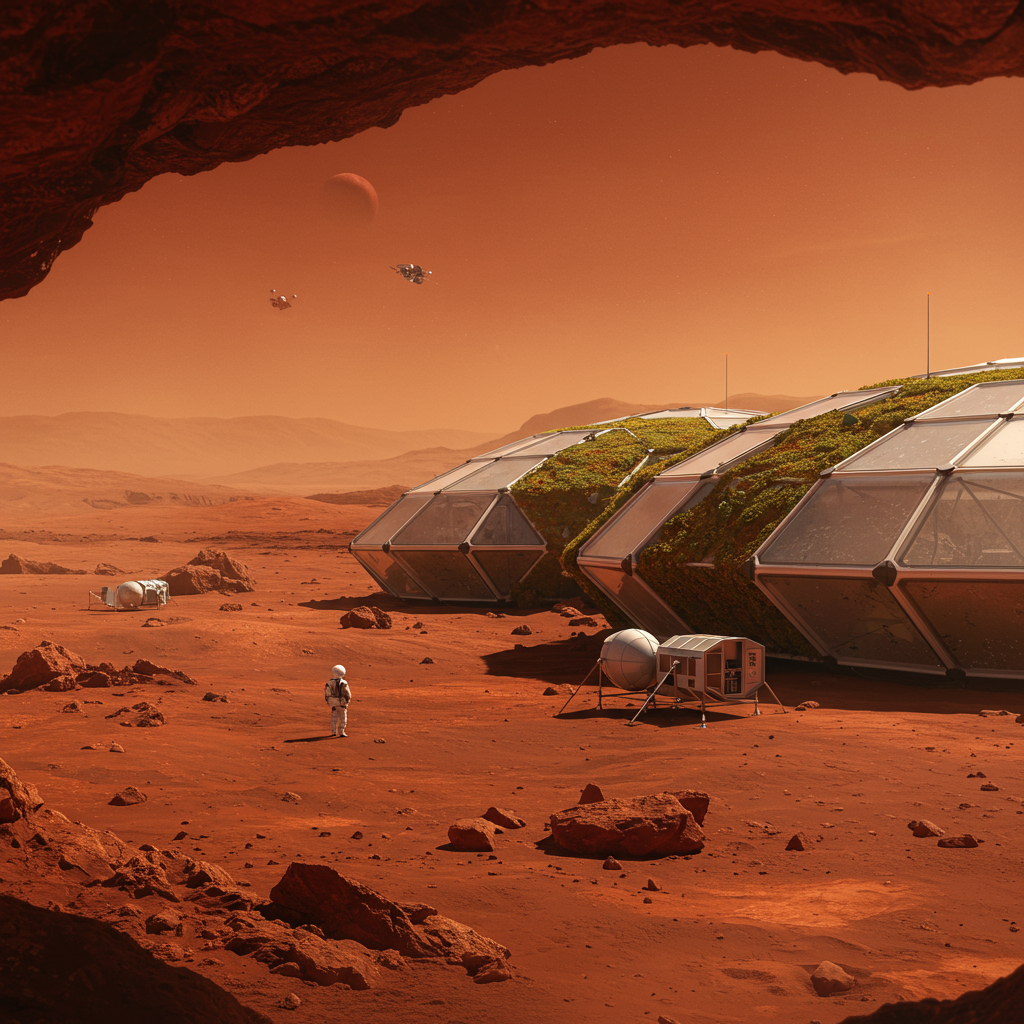Building sustainable habitats on Mars presents enormous challenges. Transporting materials from Earth is prohibitively expensive and complex, while manufacturing traditional building supplies like cement on the Martian surface is incredibly difficult. However, scientists are exploring innovative solutions that look to nature for inspiration.
A groundbreaking proposal from researchers at the University of Texas suggests an unlikely construction material for the Red Planet: lichens. These remarkable symbiotic organisms could potentially replace conventional cement, offering a sustainable and in-situ resource for future Martian colonies.
What are Lichens and Why Mars?
Lichens are not single organisms but rather a fascinating partnership, typically between a fungus and an alga or cyanobacterium. This symbiotic relationship allows them to survive and thrive in extreme conditions, combining the strengths of both partners. The fungus provides structure and protection, while the alga or cyanobacterium performs photosynthesis, converting light and carbon dioxide into energy.
The harsh Martian environment – characterized by low temperatures, high radiation, and a thin atmosphere – poses significant hurdles for life. While some natural lichen species show resilience to Martian-like conditions on Earth, their reproduction might still require human assistance.
To overcome this, the researchers have engineered an “artificial lichen” specifically designed for autonomous growth on Mars. This synthetic version pairs robust filamentous fungi with hardy cyanobacteria. In this engineered symbiosis, the fungal mass provides a protective environment, shielding the more vulnerable cyanobacteria from harsh surface conditions. In turn, the cyanobacteria utilize the Martian atmosphere’s carbon dioxide to produce oxygen and energy through photosynthesis, essentially feeding the fungi. This self-sufficient biological system could grow on Mars without constant human intervention.
Bio-Cement in Action: From Earth to Mars
The core idea isn’t just about growing lichens on Mars; it’s about using them as a living binding agent. Instead of using cement mortar to hold together terrestrial building materials, scientists propose using these engineered lichens to bind together particles of Martian soil, or regolith. This mixture of bio-material and Martian “sand” would create a composite material analogous to concrete – a “bio-cement.”
This concept of using biological crusts as natural binders isn’t entirely alien to Earth. For example, large sections of the ancient Great Wall of China, particularly those built with rammed earth, have been naturally reinforced and preserved by thin layers of biocrusts composed of cyanobacteria, mosses, and lichens.
Studies have shown that these natural biocrusts act as a living protective layer, significantly enhancing the structural stability and erosion resistance of the wall sections. In fact, samples containing biocrusts were found to be up to three times stronger than bare rammed earth areas. The organisms within the biocrusts secrete substances, like polymers, that tightly bind soil particles together, forming a cohesive network similar to a natural cement.
Applying this principle to Mars, the artificial lichens could secrete similar binding agents, transforming loose Martian regolith into a solid, load-bearing material suitable for construction.
Building the Future with 3D Printing
The potential applications for this Martian bio-cement are vast. Researchers envision using this biologically produced binding material in advanced 3D printers. These printers could then construct structures on Mars layer by layer, following specific architectural designs, using only the in-situ lichen-regolith mixture.
Scientists are currently focused on developing and refining these synthetic lichens to ensure they produce an effective binding agent and are compatible with 3D printing processes.
This innovative approach combines bio-engineering with additive manufacturing, offering a potential pathway to sustainable Martian habitat construction. By leveraging engineered biological systems and local resources, future colonists might build their homes not with energy-intensive processes and imported materials, but with the help of hardy, adaptable life forms like lichens.



